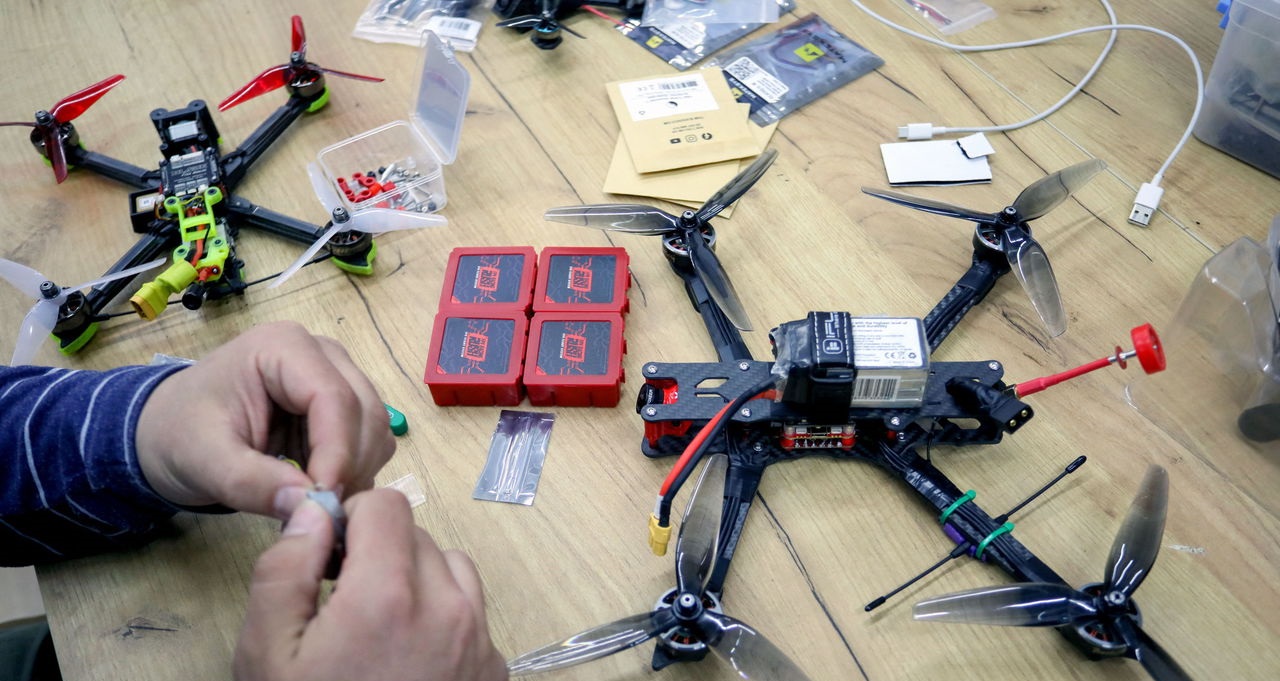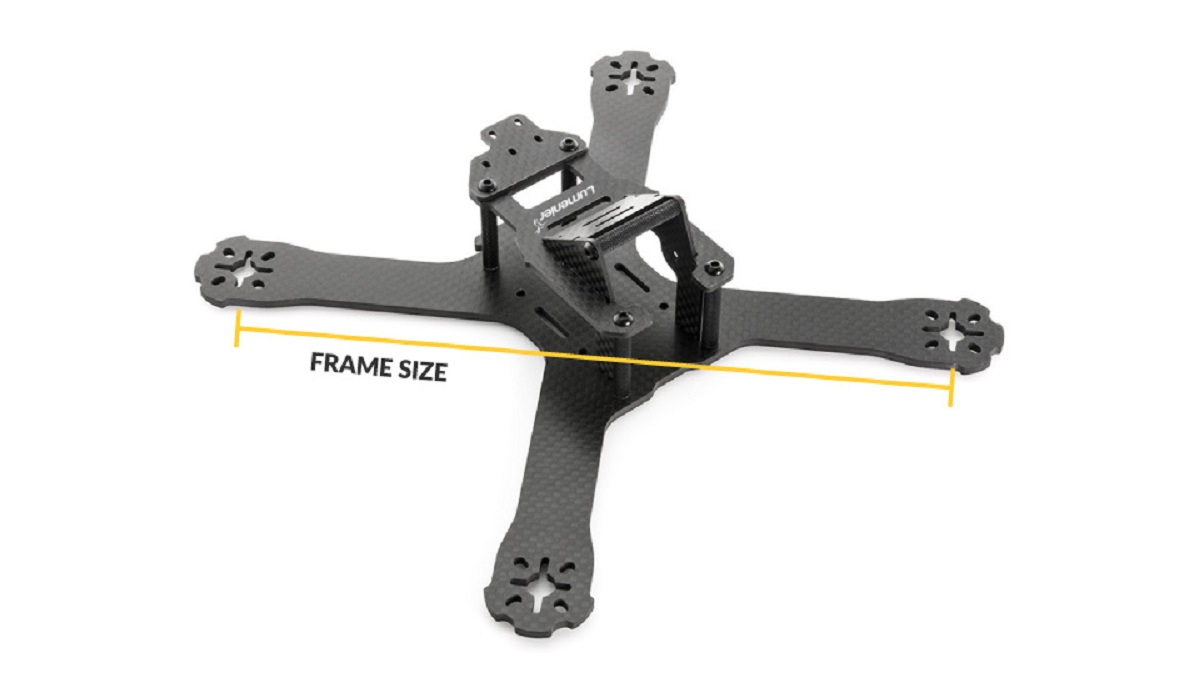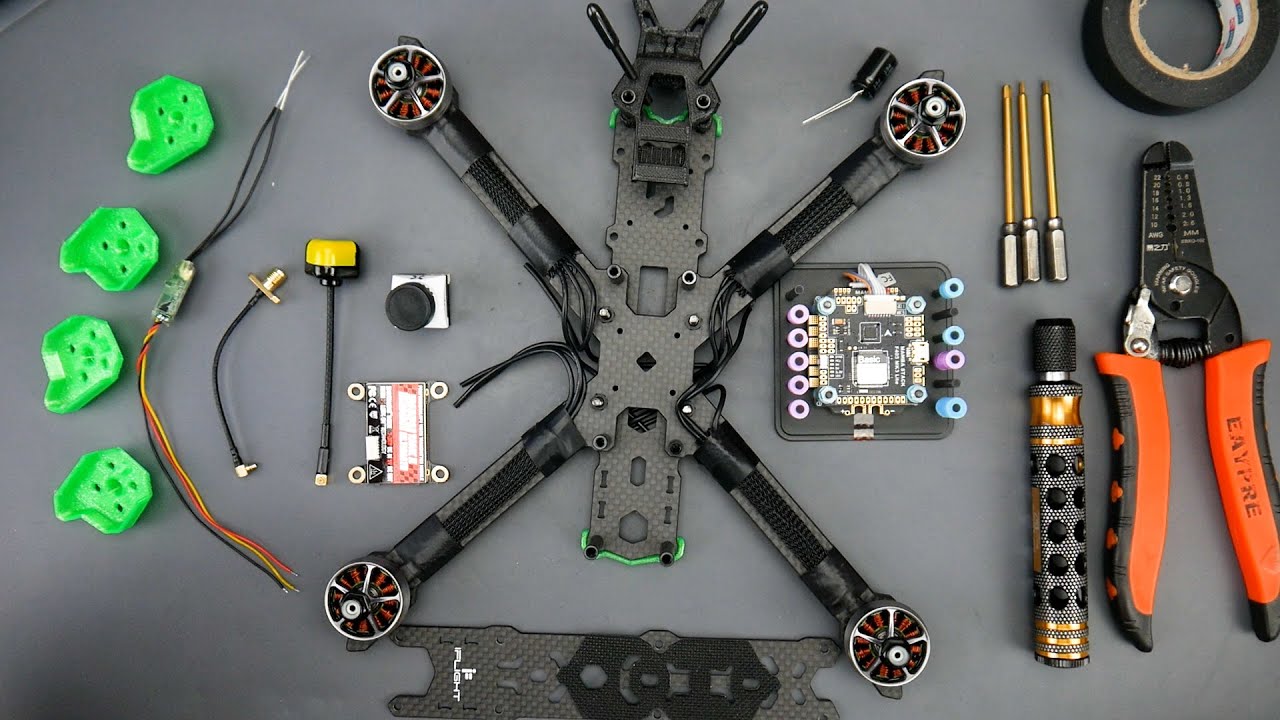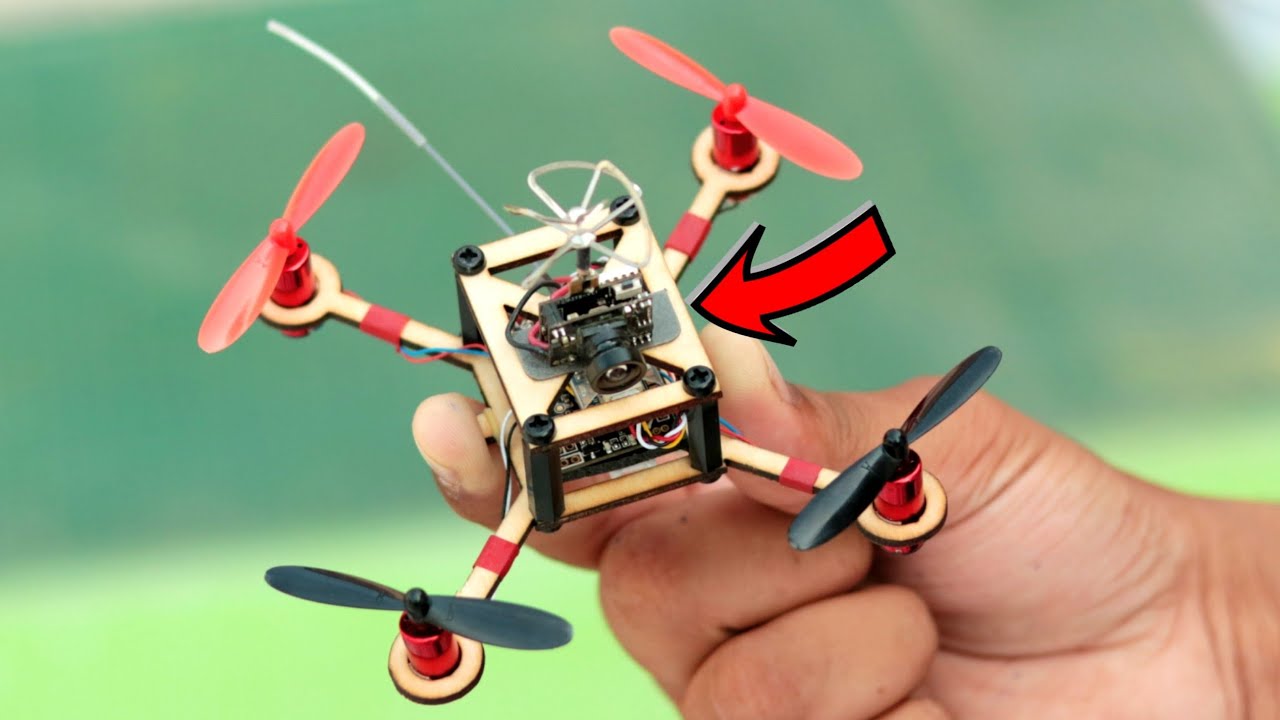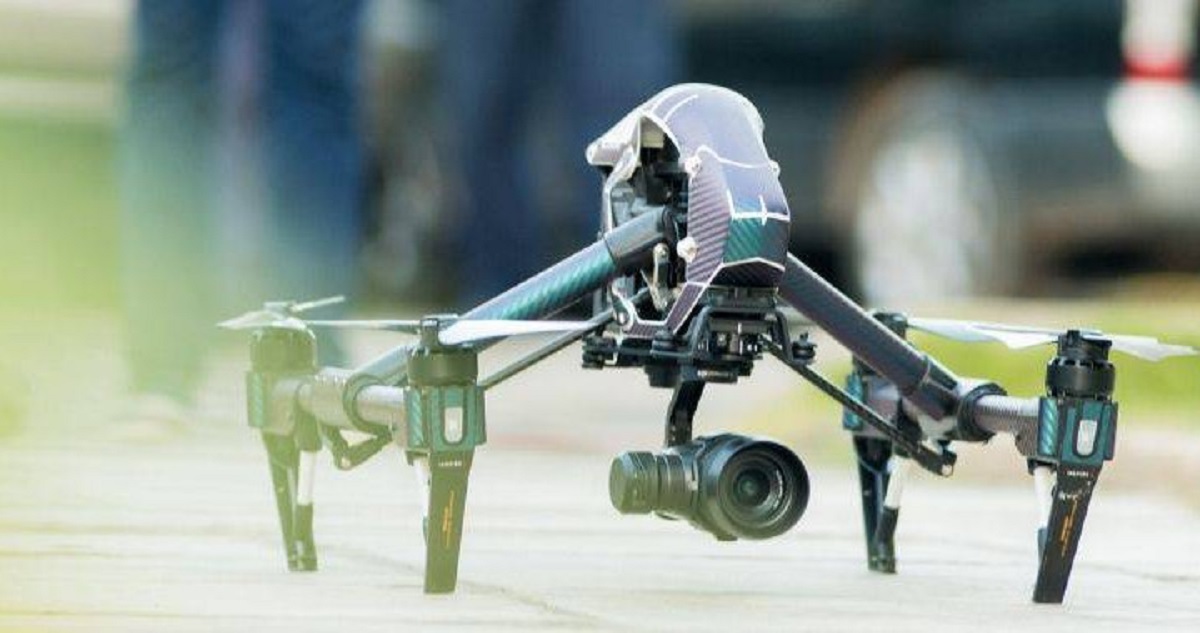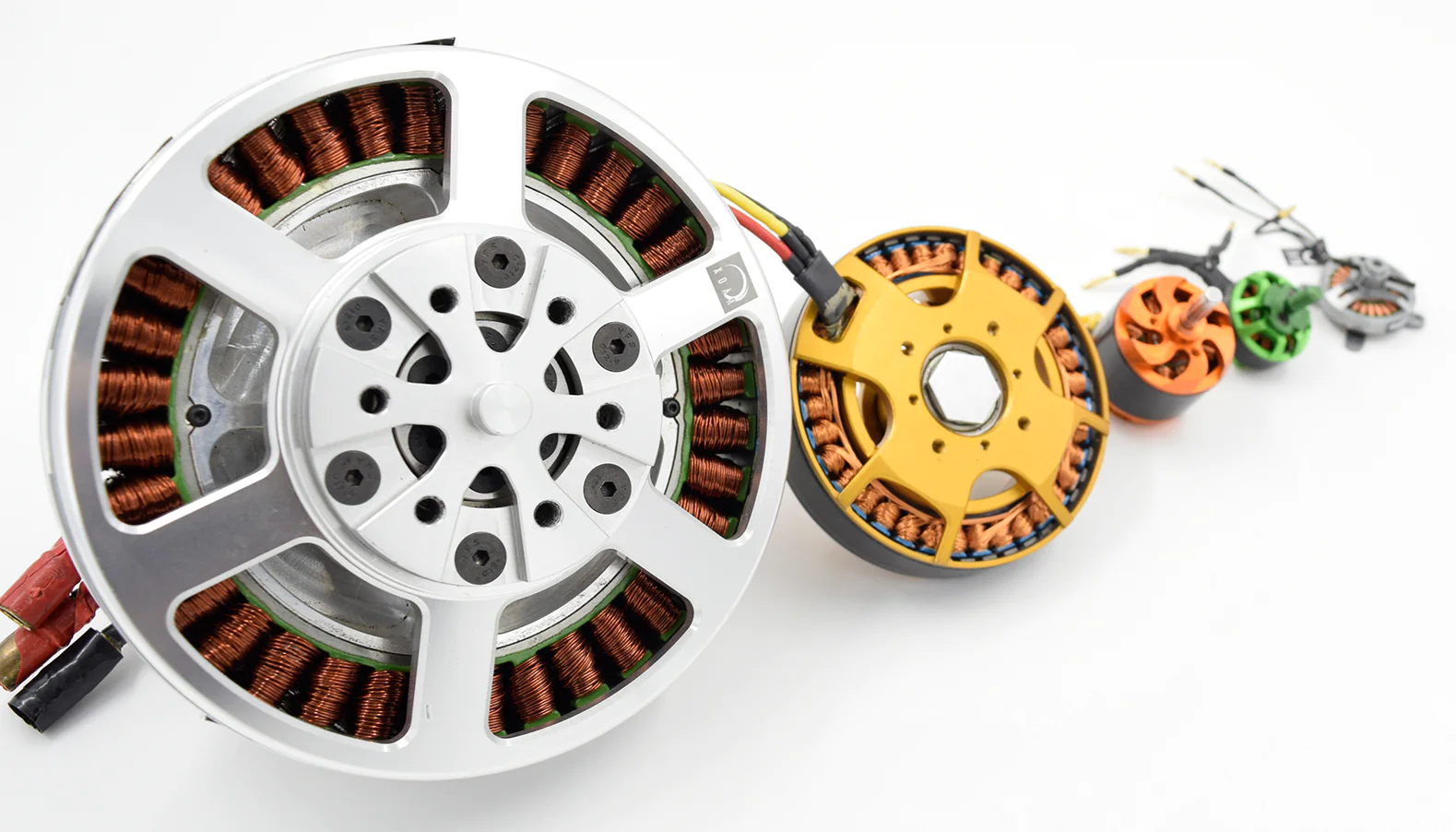Introduction
Welcome to the exciting world of drone design! Drones have become increasingly popular in a variety of industries, from aerial photography to package delivery. When it comes to designing a drone that can perform effectively and efficiently, one crucial factor to consider is the Thrust-to-Weight Ratio (T/W).
The Thrust-to-Weight Ratio is a fundamental metric used to evaluate the performance and capabilities of a drone. It measures the amount of thrust generated by the propulsion system of the drone compared to its weight. Put simply, it assesses how much force the drone’s motors can generate relative to its mass. Understanding and optimizing the T/W ratio is paramount to enhancing a drone’s flight capabilities.
Designing a drone with the right T/W ratio is crucial because it directly impacts its flight performance. A drone with a high T/W ratio can take off faster, maneuver more efficiently, and carry a larger payload, while a low T/W ratio can result in sluggish flight characteristics and limited capabilities.
Throughout this article, we will explore the significance of the T/W ratio in drone design, factors that affect this ratio, the benefits of having a high T/W ratio, the challenges in achieving it, and strategies to improve the T/W ratio for optimal drone performance.
Whether you are a hobbyist or a professional drone designer, understanding the importance of the Thrust-to-Weight Ratio will help you create drones that excel in functionality and meet the specific requirements of your intended application.
Definition of Thrust-to-Weight Ratio (T/W)
The Thrust-to-Weight Ratio (T/W) is a performance metric that compares the amount of thrust a drone’s propulsion system can generate with the weight of the drone itself. It assesses the power-to-weight ratio, which is a critical factor in determining a drone’s flight capabilities.
To calculate the T/W ratio, the total thrust generated by the drone’s motors is divided by the drone’s weight. This ratio is usually expressed as a decimal or a percentage. For example, a T/W ratio of 2.5 indicates that the drone’s thrust is 2.5 times greater than its weight.
It’s important to note that the T/W ratio is not the only factor that determines a drone’s flight performance, but it plays a significant role. Essentially, it represents the efficiency and power of the drone’s propulsion system in relation to its weight.
A higher T/W ratio means that the drone’s motors can generate more thrust for every unit of weight, resulting in better performance. Conversely, a lower T/W ratio indicates that the drone may be underpowered, which can limit its flight capabilities.
The T/W ratio is particularly crucial in scenarios where drones need to carry heavy payloads, such as in aerial photography or cargo delivery. Drones with a high T/W ratio can lift more weight and maintain stable flight even with additional loads.
Furthermore, the T/W ratio is a vital factor in determining a drone’s ability to perform aerobatic maneuvers, accelerate quickly, and respond to control inputs effectively. Drones with a higher T/W ratio can achieve faster takeoffs, sharper turns, and better overall agility.
Overall, the Thrust-to-Weight Ratio is a fundamental metric that directly influences a drone’s flight capabilities, payload capacity, and maneuverability. It provides valuable insights into the efficiency and power of the drone’s propulsion system, helping designers optimize performance based on specific requirements.
Understanding the Significance of T/W in Drone Design
The Thrust-to-Weight Ratio (T/W) plays a significant role in the design and performance of drones. It directly impacts a drone’s ability to take off, fly, carry payloads, and maneuver efficiently. Let’s delve into the key reasons why the T/W ratio is of utmost importance in drone design.
Flight Performance: The T/W ratio is a critical determinant of a drone’s flight performance. It affects how quickly the drone can take off from the ground, how fast it can accelerate, and how effectively it can maintain stable flight. Drones with a higher T/W ratio can achieve faster takeoffs, respond more swiftly to control inputs, and maintain stable flight even in challenging conditions.
Payload Capacity: Another significant aspect influenced by the T/W ratio is the drone’s payload capacity. Drones with a high T/W ratio have a better ability to carry heavier payloads while maintaining stable flight. This is crucial for applications such as aerial photography, package delivery, and search and rescue missions, where the drone needs to transport equipment or supplies.
Maneuverability: The T/W ratio directly impacts a drone’s maneuverability. Drones with a higher T/W ratio can perform agile and precise maneuvers, making them suitable for applications such as racing or aerobatics. They can execute sharp turns, rapid acceleration, and quick stops, allowing pilots to have better control over the drone’s movements.
Endurance and Range: The T/W ratio also affects a drone’s endurance and range. Drones with a higher T/W ratio can fly for longer durations and cover more distance, thanks to their improved power-to-weight ratio. This enhances their capabilities for applications that involve extended flight durations, such as aerial surveys or inspections.
Battery Efficiency: Drone efficiency is closely linked to the T/W ratio. A high T/W ratio allows drones to operate at a lower throttle percentage, which helps conserve battery power. This means that drones with a higher T/W ratio can fly for longer periods or cover more ground before needing a battery recharge.
Considering the significance of the T/W ratio in drone design, it becomes crucial for designers to carefully analyze and optimize this metric based on the specific requirements of their intended application. Achieving the right balance between thrust and weight is essential for maximizing a drone’s performance and meeting the desired operational goals.
Factors Affecting T/W Ratio
The Thrust-to-Weight Ratio (T/W) of a drone is influenced by various factors, each of which plays a role in determining the overall performance and capabilities of the drone. Understanding these factors is essential for optimizing the T/W ratio. Let’s explore the key elements that affect the T/W ratio in drone design.
Propulsion System: The type and quality of the propulsion system have a significant impact on the T/W ratio. The choice of motors, propellers, and motor-controller combinations determines the amount of thrust that can be generated. High-performance motors and efficient propellers can contribute to a higher T/W ratio, enhancing a drone’s potential for improved flight performance.
Weight of the Drone: The weight of the drone itself is crucial in calculating the T/W ratio. The total mass of the drone, including the frame, motors, batteries, and any additional components, directly affects the amount of thrust required to achieve optimal performance. Reducing the weight of the drone can increase the T/W ratio and improve flight characteristics.
Battery Capacity and Efficiency: The battery used in the drone heavily influences the T/W ratio. Batteries with higher capacity and energy density can provide more power to the motors, leading to increased thrust. Additionally, using batteries with higher efficiency can help improve the T/W ratio by reducing the weight added by the batteries.
Aerodynamic Design: The aerodynamic design of the drone plays a crucial role in determining the T/W ratio. Reducing air resistance through streamlined shapes and minimizing drag can improve the overall efficiency of the drone, resulting in an enhanced T/W ratio. By optimizing the design, designers can achieve better flight performance and maneuverability.
Environmental Conditions: The environmental conditions in which the drone operates can affect the T/W ratio. Factors such as altitude, temperature, humidity, and air density can impact the efficiency and performance of the propulsion system. For example, drones operated at higher altitudes may experience a decrease in air density, impacting the thrust generated by the motors and subsequently affecting the T/W ratio.
Payload Weight: The weight of the payload carried by the drone can have a significant impact on the T/W ratio. As the payload weight increases, more thrust is required to maintain stable flight. Designers must consider the intended payload and its weight to ensure that the T/W ratio is optimized for successful task fulfillment.
By considering these factors and optimizing them in the design process, drone designers can achieve an optimal T/W ratio that enhances the overall performance, flight characteristics, and capabilities of their drones.
Benefits of Having a High T/W Ratio
Having a high Thrust-to-Weight Ratio (T/W) in a drone design offers a multitude of benefits that directly impact its performance and capabilities. Let’s explore the advantages of achieving a high T/W ratio in drone design:
Improved Flight Performance: A high T/W ratio enables a drone to achieve enhanced flight performance. The increased thrust-to-weight ratio allows for faster takeoffs, quicker acceleration, and more responsive maneuverability. The drone can effortlessly overcome gravity and maintain stable flight characteristics, providing pilots with better control and a more enjoyable flying experience.
Higher Payload Capacity: Drones with a high T/W ratio have a greater lifting capacity. They can carry heavier payloads while remaining stable and maneuverable. This is particularly useful in applications such as aerial photography, surveying, or search and rescue operations, where the drone needs to transport equipment, cameras, or other specialized tools.
Enhanced Maneuverability: A higher T/W ratio allows for improved maneuverability. Drones with a high T/W ratio can perform agile and precise movements, including sharp turns, quick stops, and rapid changes in altitude. This makes them suitable for applications that require precise control, such as filming action scenes, racing, or navigating through tight spaces.
Extended Flight Time: Drones with a high T/W ratio can achieve longer flight durations. With increased thrust relative to their weight, they can maintain stable flight using less power, resulting in enhanced battery efficiency. This enables longer flight times and provides more opportunities for capturing footage, conducting surveys, or completing other missions without the need for frequent battery changes or recharges.
Greater Range: Drones with a high T/W ratio can cover more ground and achieve a greater range. The increased thrust allows them to fly at faster speeds and cover larger distances, making them suitable for applications such as mapping, surveillance, or inspection of vast areas.
Improved Agility and Response Time: Drones with a high T/W ratio have improved agility and quicker response times. They can change directions rapidly, handle sudden obstacles, and respond promptly to pilot commands. This is crucial in dynamic environments or situations that require rapid decision-making and precise control, ensuring the drone can perform effectively and react swiftly to changing circumstances.
By achieving a high T/W ratio in drone design, designers can unlock these benefits and create drones that excel in performance, capability, and versatility, meeting the specific requirements of their intended application.
Challenges of Achieving High T/W Ratio
While a high Thrust-to-Weight Ratio (T/W) has numerous benefits in drone design, there are several challenges that designers face when striving to achieve and maintain a high T/W ratio. Let’s explore some of the key challenges encountered in the pursuit of a high T/W ratio:
Weight Constraints: One significant challenge is designing a drone that remains lightweight while still being structurally sound and capable of carrying necessary components. Every additional gram added to the drone’s weight impacts the T/W ratio, making it essential to carefully consider the weight of each component and optimize the design to achieve the desired T/W ratio.
Power Efficiency: Efficiently utilizing the available power is critical to achieving a high T/W ratio. This requires selecting propulsion systems, motors, and batteries that are specifically designed for optimal power-to-weight ratios. It may involve trade-offs between power output and energy consumption to maximize the overall efficiency of the drone’s power system.
Aerodynamic Constraints: Designing a drone with excellent aerodynamics is crucial for achieving a high T/W ratio. However, incorporating streamlined shapes, minimizing drag-inducing components, and balancing the need for structural integrity can pose significant design challenges. Overcoming these challenges often requires iterative prototyping and testing to find the optimal balance between aerodynamic efficiency and structural stability.
Heat Dissipation: High-performance motors and propulsion systems often generate a considerable amount of heat. Efficient heat dissipation becomes challenging when working with weight limitations and compact drone designs. Overheating can lead to performance degradation and shorten the lifespan of the drone’s components. Designers must consider innovative cooling solutions to ensure the longevity and efficiency of the propulsion system.
Battery Technology: The choice of battery technology is vital in achieving a high T/W ratio. While lithium-polymer (Li-Po) batteries are commonly used in drones, they have limitations in terms of energy density and weight. Developing lighter and more energy-dense batteries is an ongoing challenge for drone designers. Improvements in battery technology directly impact the T/W ratio and the overall performance and flight time of the drone.
Manufacturing Costs: Achieving a high T/W ratio often comes with increased manufacturing costs. Incorporating lightweight materials, optimizing designs, and using advanced components can be more expensive. Balancing the pursuit of a high T/W ratio with cost constraints can pose a significant challenge for drone manufacturers.
Despite these challenges, advancements in technology, materials, and design techniques continue to push the boundaries of achieving higher T/W ratios in drone design. Overcoming these challenges is essential to unlock the full potential of drone performance and capabilities.
How to Improve T/W Ratio in Drone Design
Improving the Thrust-to-Weight Ratio (T/W) in drone design is crucial for enhancing performance and achieving optimal flight capabilities. Here are several key strategies that can help improve the T/W ratio in drone design:
Optimize Weight Distribution: Analyze the weight distribution throughout the drone’s structure and components. By strategically placing heavier components closer to the center of gravity and reducing weight in non-essential areas, designers can achieve a better balance and improve the T/W ratio.
Use Lightweight Materials: Choose lightweight materials for the drone’s frame, such as carbon fiber or aluminum alloys, to reduce the overall weight without compromising structural integrity. Lightweight materials contribute to higher T/W ratios and improved flight performance.
Efficient Propulsion Systems: Select high-quality motors and propellers specifically designed for optimum thrust-to-weight performance. Efficient propulsion systems can generate more thrust while minimizing weight, resulting in improved T/W ratios. Consider brushless motors and efficient propeller designs to maximize performance.
Streamlined Aerodynamics: Design the drone with optimized aerodynamics to reduce air resistance and minimize drag. Incorporate streamlined shapes, smooth edges, and carefully placed air vents to achieve better airflow and improve overall efficiency. Aerodynamically efficient designs contribute to higher T/W ratios.
Battery Selection: Choose batteries with higher energy density while maintaining an appropriate power output. Lithium-polymer (Li-Po) batteries are commonly used in drone design due to their high energy density and lightweight properties. Optimize battery usage and consider advanced battery technologies to improve T/W ratios.
Motor Efficiency: Aim for motors that have a higher power-to-weight ratio, allowing for more efficient energy consumption and increased thrust. Select motors that provide a good balance between power output and weight, optimizing the overall performance and T/W ratio of the drone.
Advanced Cooling Systems: Overheating can affect the efficiency and lifespan of the motors and other components. Implement innovative cooling systems, such as heat sinks, heat pipes, or fans, to dissipate generated heat and ensure consistent performance. Effective cooling improves motor efficiency and contributes to higher T/W ratios.
Payload Optimization: Carefully consider the payload requirements of the drone and optimize its weight accordingly. Minimize unnecessary additional weight and ensure that the drone’s T/W ratio is suitable for the desired payload capacity. Balancing payload needs with overall performance contributes to an improved T/W ratio.
Ongoing Research and Development: Stay updated with the latest advancements in drone technology, materials, and power systems. Investing in research and development can lead to innovations that improve the T/W ratio. Collaborate with experts, attend industry conferences, and actively participate in the drone design community for knowledge sharing and continuous improvement.
By implementing these strategies, drone designers can enhance the T/W ratio, resulting in improved flight performance, maneuverability, and overall capabilities of the drone.
Conclusion
The Thrust-to-Weight Ratio (T/W) is a critical factor to consider when designing a drone. It measures the amount of thrust generated by the propulsion system compared to the weight of the drone. Achieving and maintaining a high T/W ratio is essential for enhancing a drone’s flight performance, payload capacity, and maneuverability.
Throughout this article, we have explored the significance of the T/W ratio in drone design. We have seen how a high T/W ratio leads to improved flight performance, higher payload capacity, better maneuverability, extended flight time, and greater range. However, achieving a high T/W ratio is not without its challenges, such as weight constraints, power efficiency, aerodynamic considerations, heat dissipation, battery technology, and manufacturing costs.
To improve the T/W ratio in drone design, several strategies can be employed, including optimizing weight distribution, using lightweight materials, implementing efficient propulsion systems, focusing on streamlined aerodynamics, selecting appropriate batteries, improving motor efficiency, incorporating advanced cooling systems, optimizing payload, and investing in ongoing research and development.
By considering these factors and employing these strategies, drone designers can create drones that excel in performance, capabilities, and efficiency. Whether in aerial photography, surveying, package delivery, or any other application, understanding and optimizing the T/W ratio results in drones that can achieve remarkable flight performance, carry heavier payloads, maneuver with precision, and operate for extended durations.
As drone technology continues to advance, it is crucial for designers to stay updated with the latest developments, collaborate with industry experts, and strive for continuous improvement. By incorporating innovative solutions and applying best practices in drone design, we can unlock the full potential of the Thrust-to-Weight Ratio and create drones that redefine what is possible in aerial exploration, industry applications, and beyond.









